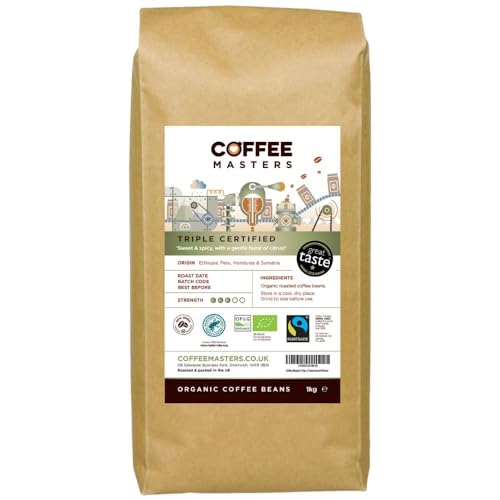Which Coffee Beans Are the Best?
The type of beans that you choose will make the difference when is time to make a fantastic cup. Each kind has its own distinct taste that pairs well with a variety of beverages and recipes.
Panama is the leader in the field with their exclusive Geisha beans which score well in cupping tests and are expensive at auction. But Ethiopia especially Yirgacheffe beans is close behind.
1. unroasted coffee beans from Panama
If you're looking for the best coffee beans around the globe look at Geisha beans from Panama. Geisha beans are coveted for their distinctive aroma and flavor. These rare beans, harvested at high altitudes undergo an unusual process that gives them their distinctive flavor. The result is a coffee with a smooth, rich flavor.
Geisha coffee is indigenous to Ethiopia but was introduced into Panama for the first time in 1963. Geisha coffee is renowned for its superior flavor and taste. Geisha beans are also costly due to the work required to grow them. Geisha coffee plants are more difficult to cultivate because they require higher elevations as well as special climate conditions.

Geisha beans are also very delicate and should be handled with great care. They must be sorted carefully and carefully prepared to roast. They can become acidic or bitter if they are not properly prepared.
The Janson Coffee Farm is located in Volcan. The farm is dedicated to improving the environment and specializes in producing top-quality beans. They use solar panels to generate energy and recycle waste water and materials, and employ enzyme microbes to improve soil. They also reforest the area and reuse water to wash. The coffee they produce is a Washed Geisha and was awarded the highest score at a Panama Coffee Competition.
2. Ethiopian Coffee
Ethiopia is a major coffee producer with a long track record of producing some of the finest brews. They rank 5th in the number of coffee producer in the world. their beans are prized because of their unique floral and fruity flavor profiles. Ethiopians unlike other beans, taste best when roasted to medium roast. This lets the floral notes be preserved while highlighting the fruity and citrus flavors.
While Sidamo beans are renowned for their sour acidity, citric acidity, other coffees from other regions like Yirgacheffe and Harar are also thought to be some of the best around. Harar is the oldest and most popular variety. It has a distinctive mocha and wine flavor. Coffees from the Guji region are also renowned for having complex flavors and distinct terroir.
Another kind of coffee that comes from Ethiopia is called natural process. It is processed dry instead of wet-processing. Wet-processing involves the washing of coffee beans which tends remove some of its fruity and sweet taste. Until recently, natural process coffees from Ethiopia were less well-known than their washed counterparts, and they were typically used to brighten up blends, rather than being sold as a singular-origin product on the specialty market. However, recent technological advancements have made it possible to get higher-quality natural Ethiopians.
3. Brazilian Coffee
Brazilian Coffee is a rich mixture of different types. It is characterized as having low acidity. It has sweet-toned flavors and the hint of chocolate. The flavors may vary based on the region and state in which it is grown. It is also renowned for its citrus and nuts notes. It is good for those who enjoy medium-bodied coffee.
Brazil is the biggest coffee exporter and producer in the world. Brazil is the largest producer of more than 30 percent of the world's total coffee beans. Brazil's economy is heavily reliant from this vast agricultural industry. The climate is perfect for coffee cultivation in Brazil, and there are fourteen major regions for coffee production.
Catuai beans, Mundo Novo beans, Obata beans, and Icatu are the main beans used to make Brazilian coffee. These are all varieties of Arabica coffee. There are also a number of hybrids which include Robusta. Robusta is the name of a coffee bean that originated in Sub-Saharan Africa. It's not as tasty and aromatic as Arabica however, it's a lot more easy to cultivate.
It is important to keep in mind that slavery is a reality in the coffee sector. Slaves in Brazil are often subjected to lengthy and exhausting work days and may not have adequate housing. The government has taken steps to address this problem and has instituted programs to help farmers pay off their debts.
4. Indonesian Coffee
The finest coffee beans from Indonesia are renowned for their dark, bold flavor and earthy sour taste. Volcanic ash in the soil creates a earthy flavor and a robust body. They are perfect to blend with beans from Central America or East Africa with a higher acidity. They also respond well to darker roasting. Indonesian coffees have a rich and rustic taste profile and often have tasting notes of leather, tobacco wood, ripe berries and spices.
The biggest producers of coffee in Indonesia are located on Java and Sumatra and some are from Sulawesi, Bali, and Papua New Guinea. Many farms in this region utilize a wet-hulling technique. This differs from the washed process used in most parts of the world. Coffee cherries are pulverized, then washed and dried. The hulling process reduces amount of water present in the coffee, which limits the impact rain can have on the quality of the finished product.
One of the most well-known and high-quality varieties of Indonesian coffee is Mandheling, that comes from the Toraja region. It is a full-bodied, robust coffee with hints of candied fruit and intense chocolate flavors. Gayo and Lintong are also varieties of coffee that come from this region. They are usually wet-hulled and have a rich and smokey flavor.
